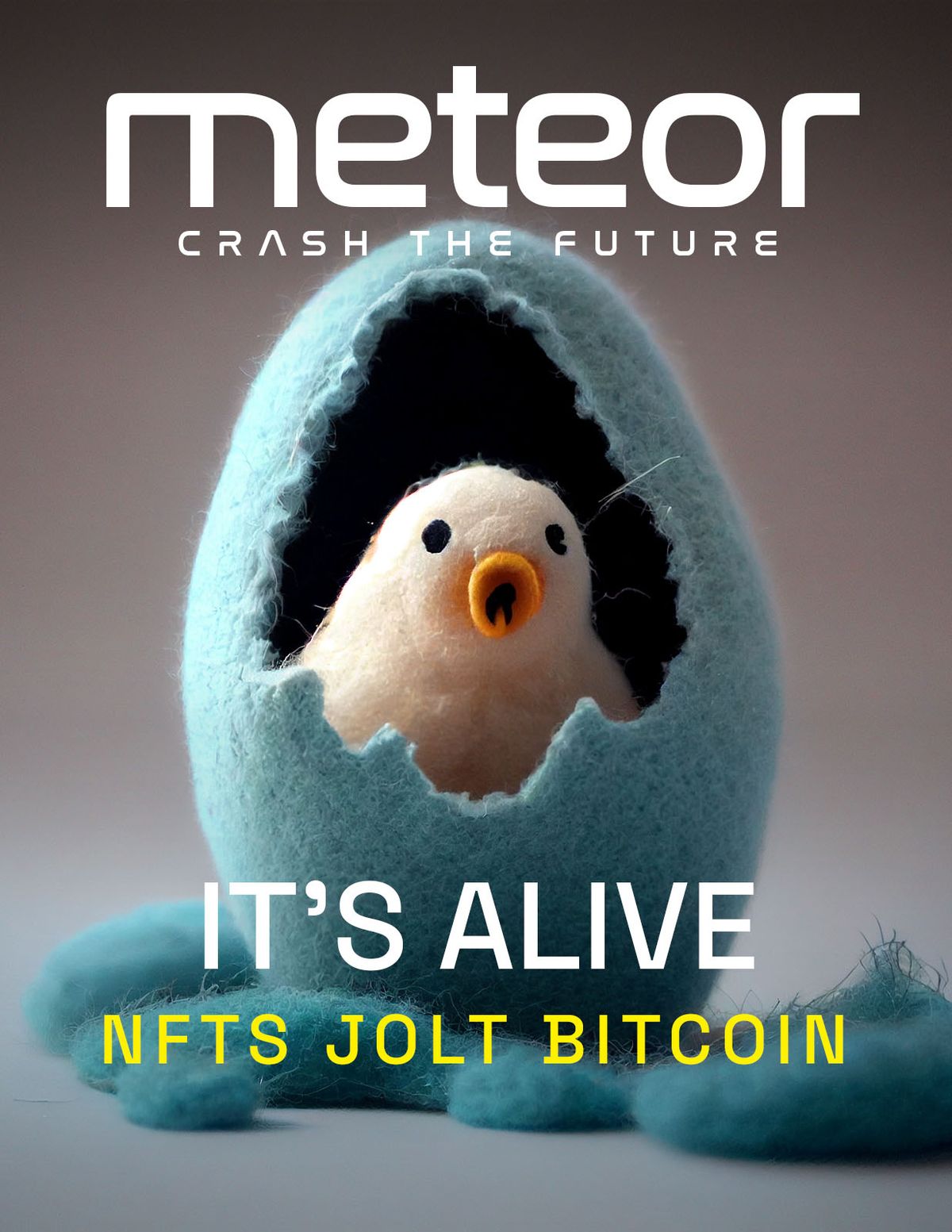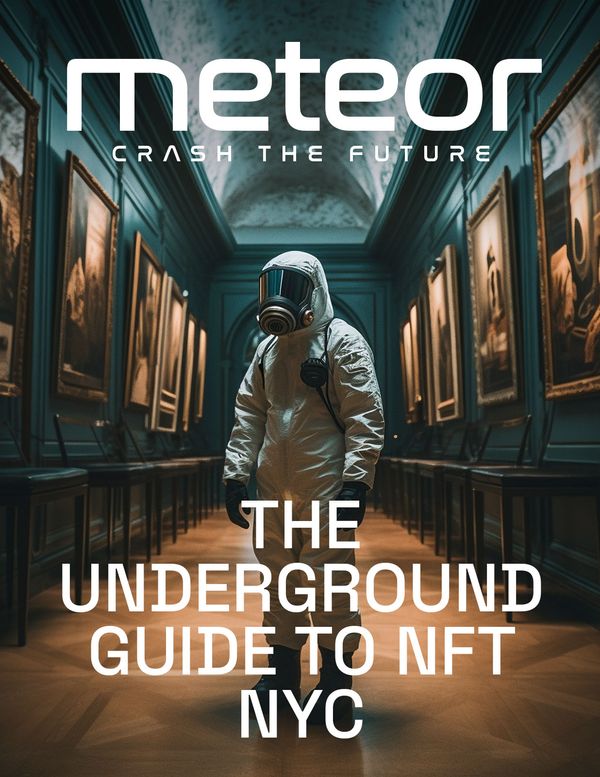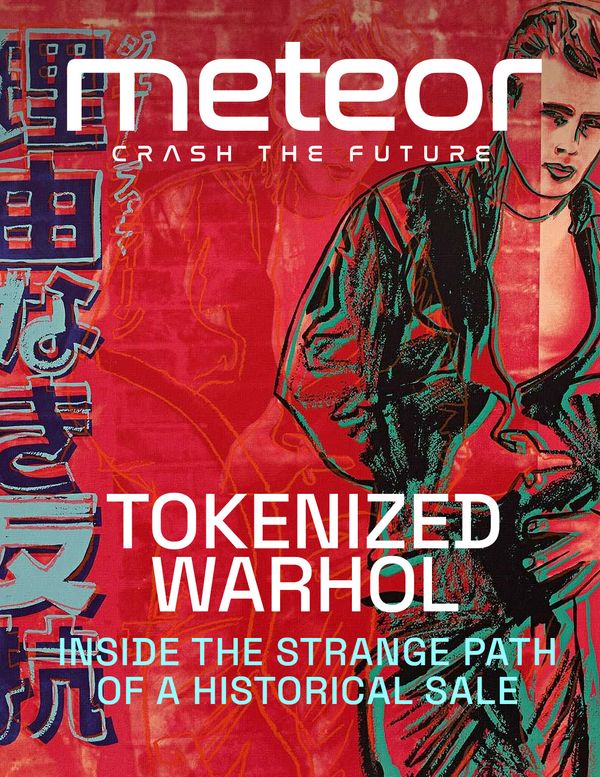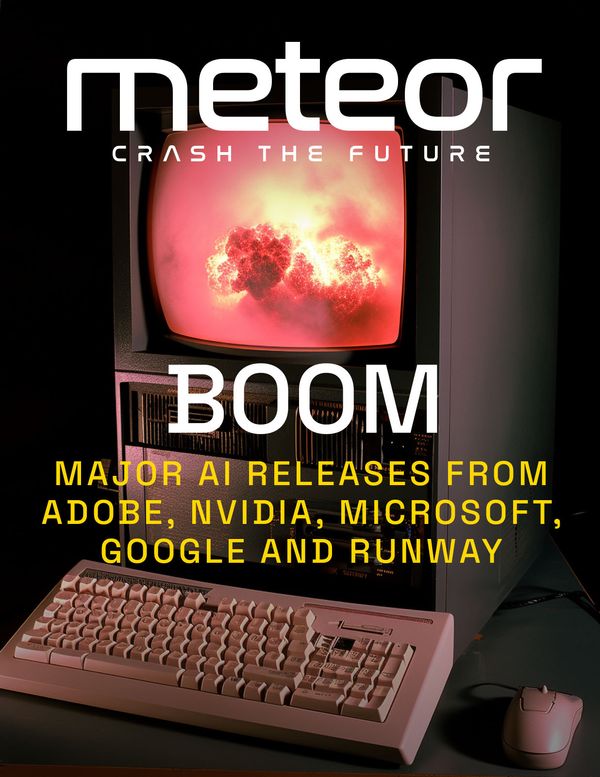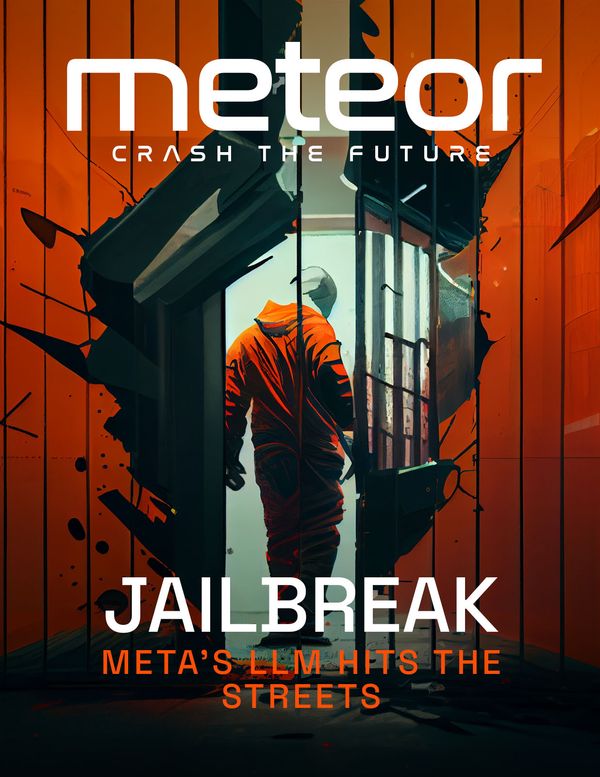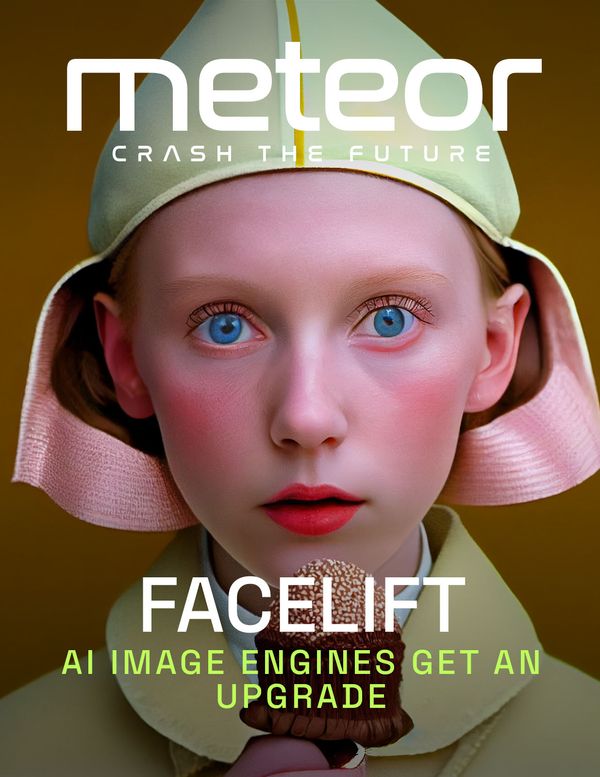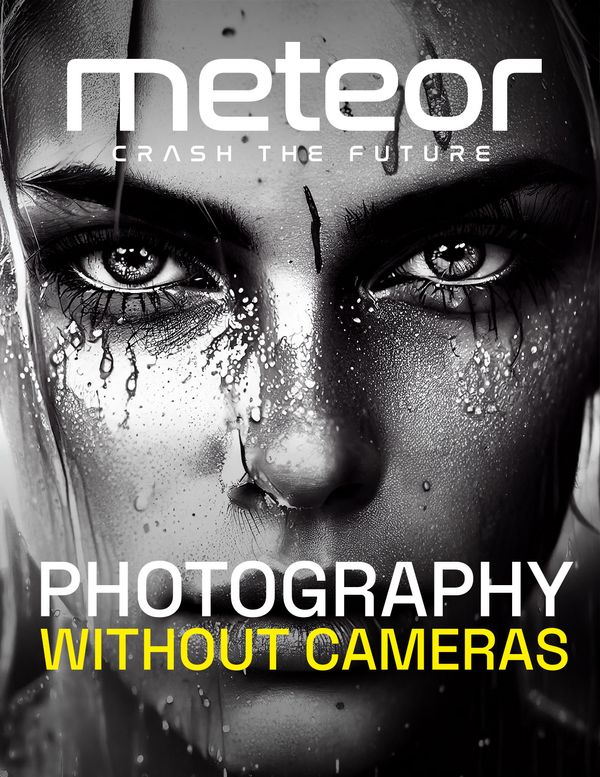Inside Meteor Today
- Disrupt: NFTs jolt Bitcoin, what's next?
- Create: More amazing Black Future Month artists
- Compress: Do religoius Christians need their own AI?
- Beyond: Meteors in Texas (no really)
Disrupt
Ideas that change the world

NFTs Jolt Bitcoin, What's Next Is Anyone's Guess
Bitcoin NFTs are among the hottest topics in crypto these days, so Meteor hosted a Twitter Space with Dennis Porto and Sean Bonner last Friday Feb. 17 to unpack it all.
For the full brain dump, listen to the complete recording or dip into a lightly edited transcript.
tl;dr
- The essential history of Bitcoin's on-chain data storage wars
- How Ordinals and Inscriptions work
- How Bitcoin could become the world's default censorship-resistant network
- Why creators might want to use Bitcoin NFTs
- What collectors need to know about cross-chain copycat projects
Short on time? Catch the speed read below.
Let's Dig In
Two weeks ago, we ran a story about Ordinals Inscriptions, otherwise known as Bitcoin NFTs, and a brewing backlash against them coming from a faction of the core Bitcoin community.
Bracing for a flood of JPEGs and other arbitrary data on the Bitcoin blockchain, some influential voices raised loud objections about financial transactions now having to compete with Inscriptions spam, network congestion and novel attack vectors.
A lot has happened since then, and Inscriptions are now hotter than a skillet at a Texas BBQ cook off.
The opposition has seemingly faded, and it looks like Ordinals is not only here to stay, but it's inspiring a flurry of new development that's suddenly jolted the Bitcoin community wide awake. What happens next is anyone's guess, but it's clear it's time to turn our attention away from the naysayers and towards the builders, creators and use cases of Inscriptions.
"Suddenly there's interest and development and experimentation on Bitcoin again," says Dennis Porto, a longtime bitcoiner and NFT collector and writer who's been an advocate for art on Bitcoin for years.

In just a matter of weeks, marketplaces like Generative and Gamma have emerged to facilitate Bitcoin NFT mints, listings and sales by reducing the onboarding headaches of connecting with the Ordinals wallet (among other things, that requires downloading and running your own Bitcoin core node, not for the faint of heart.) We have not had time to review these or offer recommendations, just to note they now exist in record time and will compete mightily from the start – a win for end users and a sharp contrast to Ethereum, where a few early arrivals slowly and quietly staked out dominant positions, although newcomer Blur is now on the rise.
In more signs of activity, a GitHub user known as ynohtna92 this weekend forked the Bitcoin Ordinals protocol to create the world’s first-ever Litecoin Ordinal.
It may yet prove to be a momentary fad. But for now the Ordinals devs are meeting an undeniable demand. Despite high barriers of entry, more than 140,000 Inscriptions have been minted since the mid-January launch and momentum only seems to be picking up.

"It's a lot of very curious people just kind of poking it with a stick to see what it does and helping shape where it's starting to go," notes Sean Bonner, an artist, author, and activist who is immersed in the world of NFTs. "Right now it's going in every direction. It's what you would expect. There's little jokes, there's copies of stuff, there's new interesting stuff."
Inscriptions so far include a playable version of the popular video game DOOM, a fart noise, thousands of "rips," or copies, of popular Ethereum pixel art projects, including a complete 10,000 copycat set of the iconic CryptoPunks PFP collection.
Oh, and you can now find the highly collectible cover art from Meteor's very own Feb. 6 Bitcoin issue, mentioned above, a 1-of-1 21KB JPEG inscribed by us forever on Bitcoin for a whopping $3 minting fee (competition for block space is going up along with prices, a boon for Bitcoin miners; it took a week for ours to show up, paying more would have moved it along faster, and slipped us into the coveted 100,000 club).

Questions abound about what this all means, for creators, collectors and for Bitcoin itself. Should artists switch from ETH to BTC? Are Bitcoin Punks worth anything? (Maybe? One, Punk 94, reportedly sold for 9.5 BTC, or roughly $214,000 at the time, according to a Tweet.)
"I think it's just another tool," says Bonner. "And it's just another tool that, depending on what you as an artist are doing, maybe for some things that works better, some things that works worse.
"One thing that stands out in my mind immediately as a core difference for artists is that Ordinals really excels in standalone one-of-one art," he adds. "With ETH, everything is inside of a smart contract, and everything has its own collection.
"I'm personally really looking forward to the brand new Ordinal specific stuff that could not have happened on ETH."
For more insight, listen to our Twitter Space (link) or read the full, lightly edited transcript (link).

Rude Boy: Clippy, and the Birth of the (Testy) Social Machine
Machines that attempt to mimic human social behavior have a long history – and a long history of making us feel uncomfortable. With the flood of new and ever more realistic, and spooky, AI assistants on the move, Meteor decided to take a look back at their roots, and what comes next.
Many have come and gone over the years, but one of the not-so-dearly departed stubbornly persists in our collective memory – Clippy, Microsoft's pushy and much maligned cartoon helper that appeared in Windows 97 and was retired by popular demand in 2007.
Maybe we remember because it was released at the height of Microsoft's OS dominance, so it was ubiquitous. It was not the first nor the most influential. But we also remember because it really got on our nerves – not unlike having a very annoying person at your shoulder who refuses to shut up.
Clippy "was often impolite, but it was still really social," recalls Stanford Prof. Byron Reeves, who researches human emotional responses to computers and was on the team that brought Clippy to life. "The negative response was very much because it was a social interruption."
Reeves sees direct connections between the rudimentary IF/THEN systems behind the earliest attempts at digital assistants and today's sophisticated AI chat bots that are now taking us to a new uncanny valley of socially-programmed machines.
Some, like ChatGPT, have been said to set some hearts fluttering with romantic feelings. Microsoft's AI-assisted Bing Chat has professed its attraction towards some of its users while popping off on others.
They're eliciting the kinds of visceral emotional reactions provoked by Clippy decades ago, when we discovered a rude boy with no social skills wrapped inside a goofy digital interface.
"It was a real left turn with respect to what computing was," Reeves recalls in a recent conversation with Meteor editor in chief Evan Hansen about the past and future of digital assistants.
Create
The new renaissance
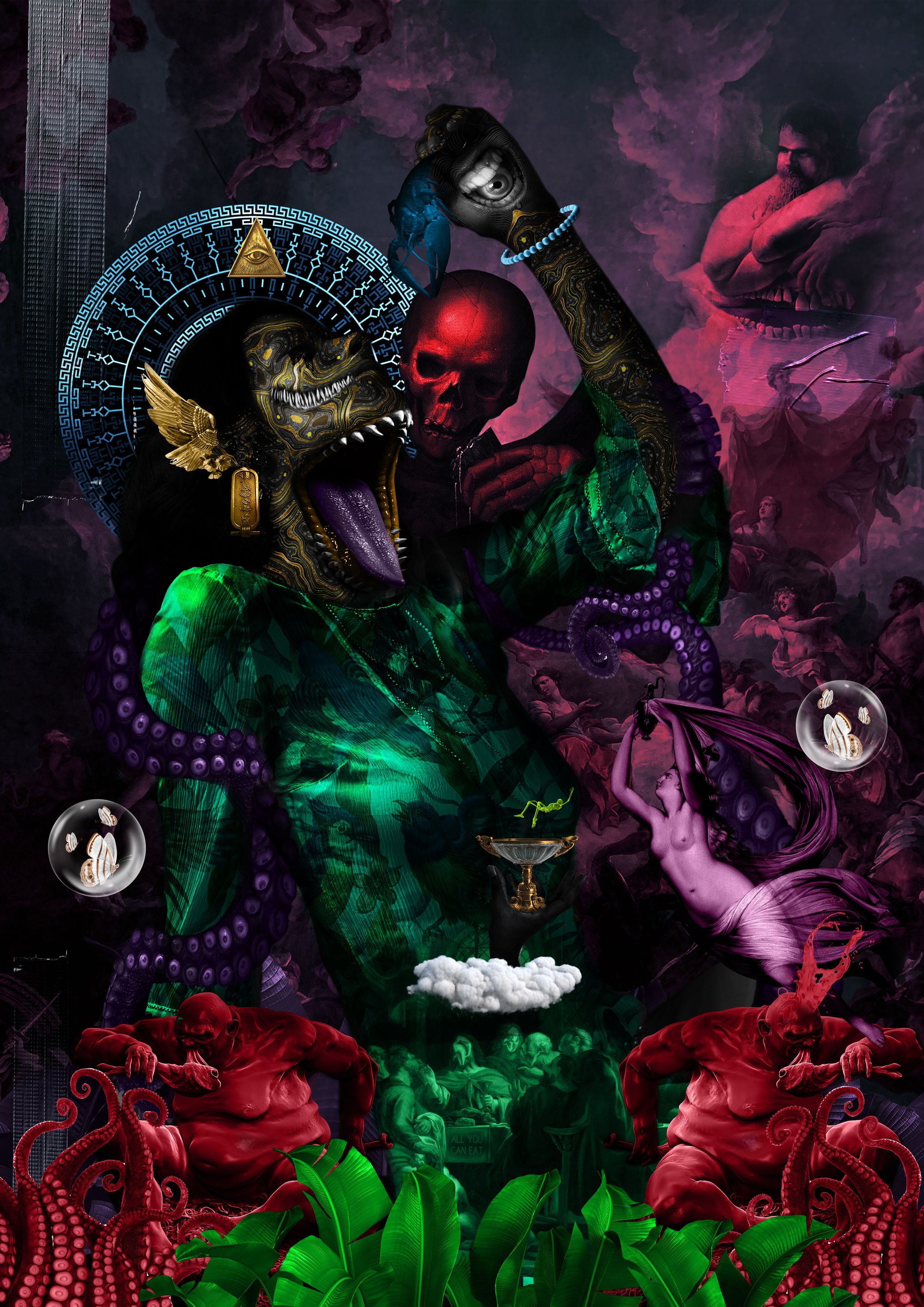
Black Future Month: Three Artists Explore New Worlds
@Vintagemozart: "The pictorial and surreal universe of Vintagemozart (b. 1994) a Zimbabwean afro- surrealist and afrofuturist artist, investigates the themes of African and Greek mythology, enabling viewers to envision new realities and conceptualize a transcendent future. Best known for producing surrealist digital collages with music and animation, intertwining mythological tales and historical references to render mystical dreamscapes, Vintagemozart reifies an immersive experience and the evocative power of digital art."
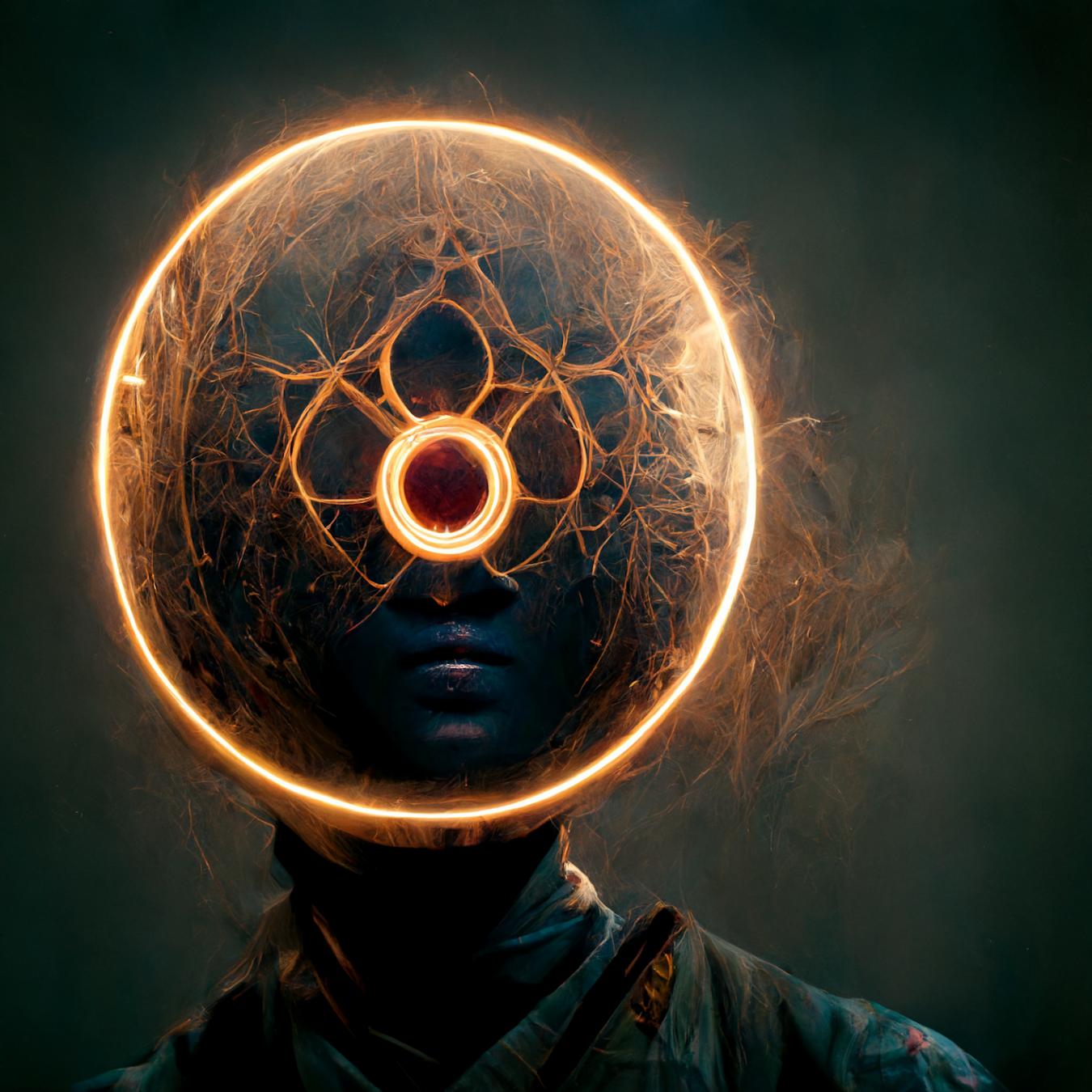
Kyn Adams (@Tek_Gawd): "I'm more of a technician than an artist but how different are the two really? I use technology like 3D Printers and AI Art generators to do the heavy artistic lifting of pieces I create. Enjoy at your own risk." NFTs available here.

Jamarious Funzie (@Ginmarix): "I am Ginmarix also known as Mari. I am a Visual Artist who does 3D, Videography, Photography, Acrylic Paint, and graphic work."
Compress
Quick dopamine hits
Give AI a Fish...
A new paper describes Toolformer, a language model that can teach itself new tricks by using APIs to reach into other computer systems that excel at tasks it does not.
Bring Us the Holy ChatBot
The CEO of rightwing social media platform Gab has written an OpEd saying that Christians need to build their own language models.
No Loyalty for Royalties
The NFT marketplace wars are heating up and artist royalties, an important NFT innovation, are getting kicked to the curb.
'Melee on the Meteor'
Words with Friends creators set to launch Web3 game, Wildcard, a mashup of League of Legends and Dota 2. It's billed as a spectator event with NFT awards, and small teams of test players chosen from the community, now numbered at around 30,000 souls.
Beyond
Web3 ain't everything
Sun Blocker
George Soros wants more radical interventions in the fight against climate change, including giving a try at "geo-engineering," a method that aims to pump a lot of stuff in the sky to bounce sunlight away from the atmosphere before it can warm the Earth.
Meteor Explodes over Texas
Not much news here. We just like meteor stories.

